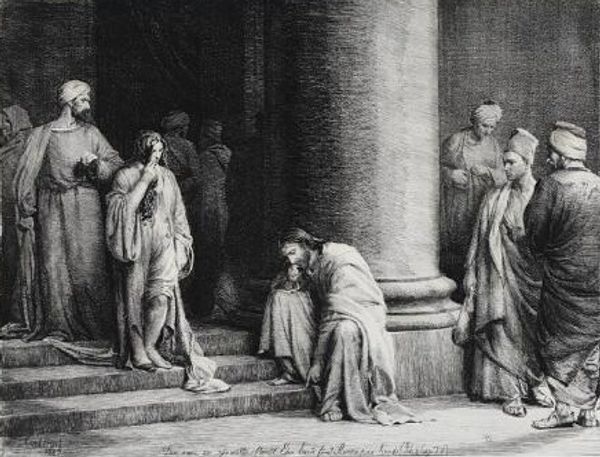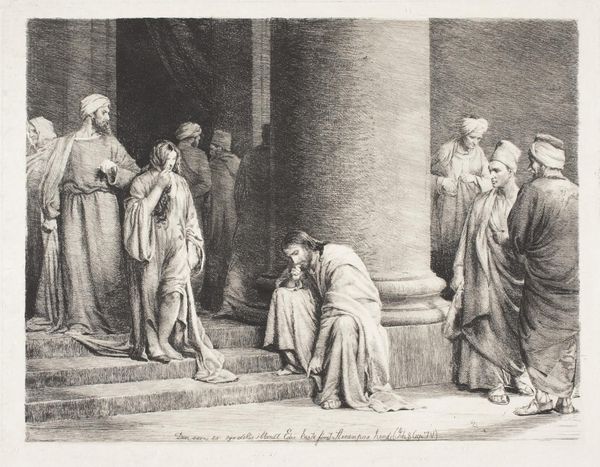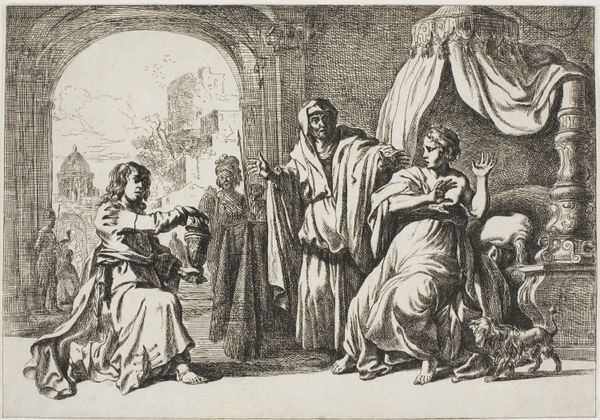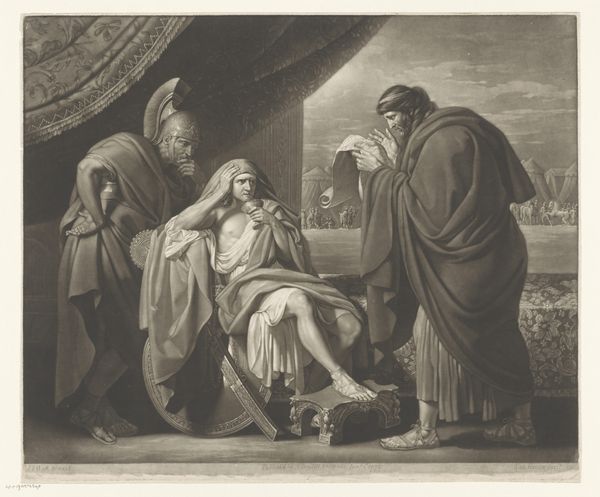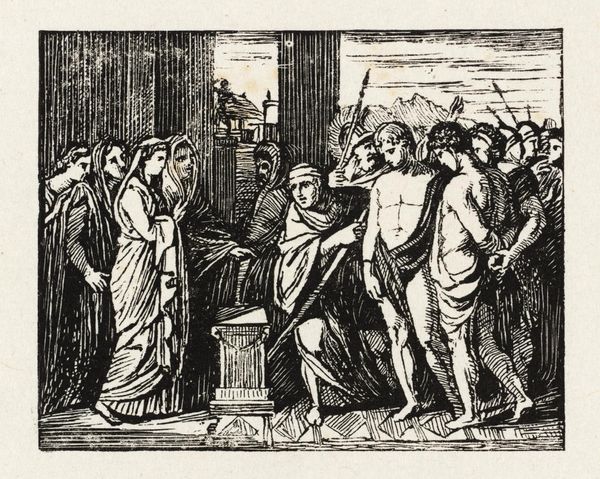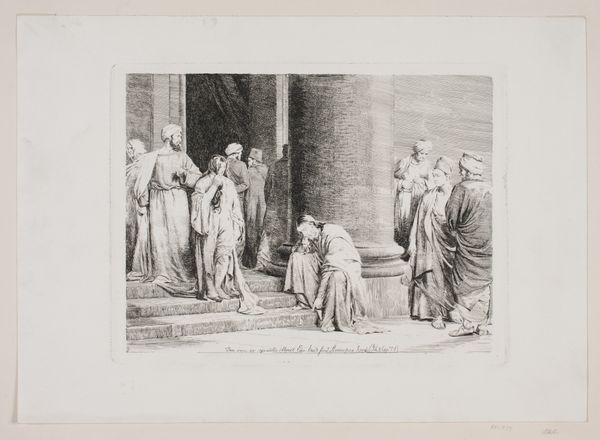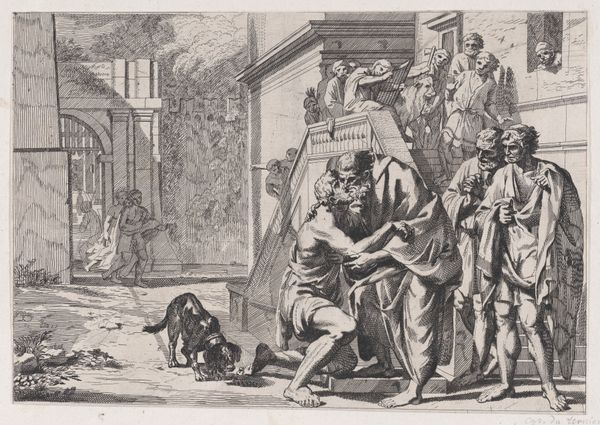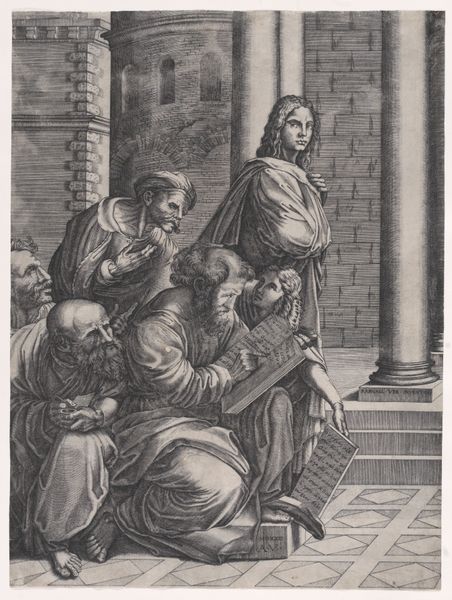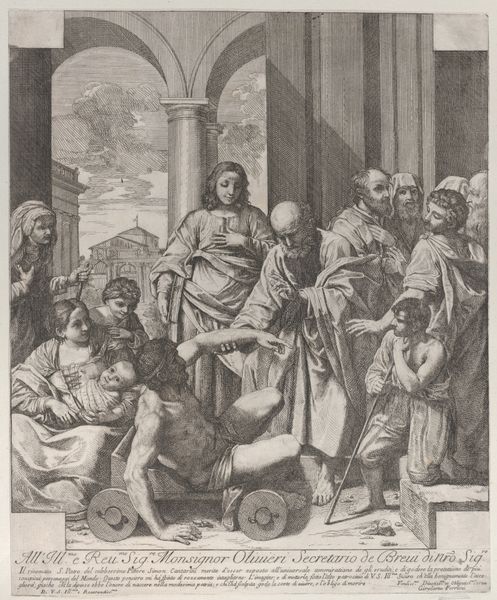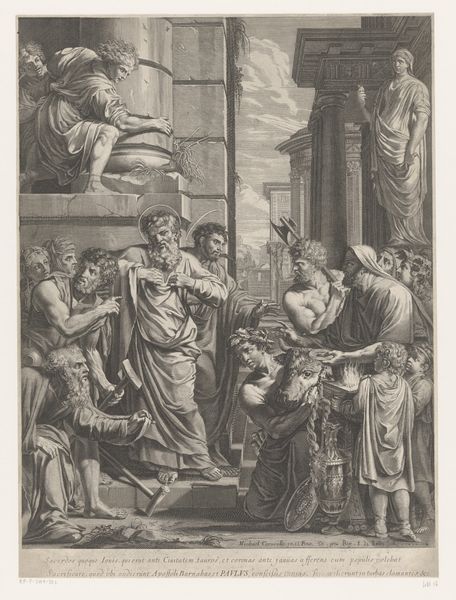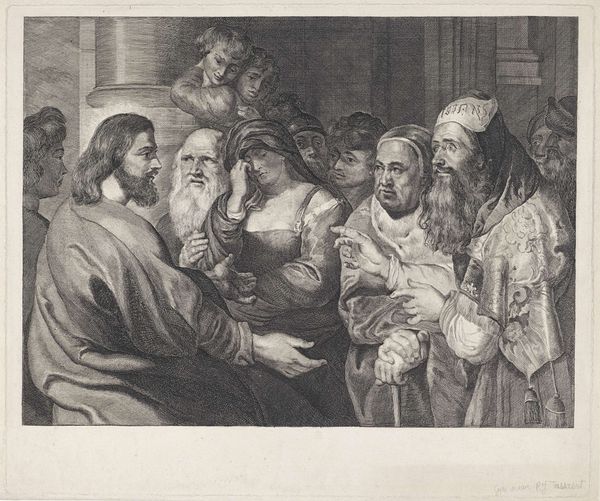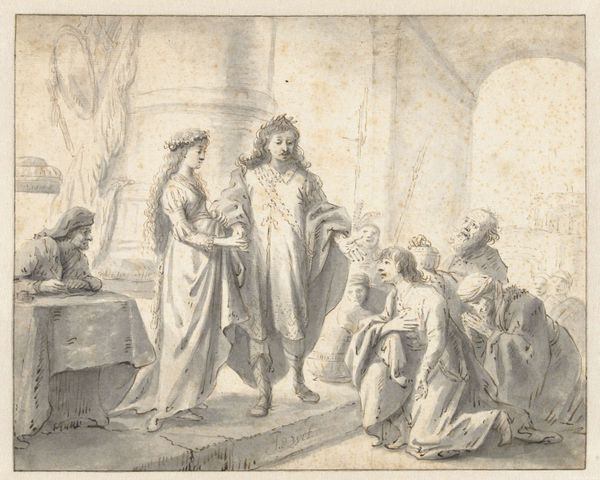
print, etching
#
narrative-art
# print
#
etching
#
figuration
#
history-painting
#
academic-art
#
realism
Dimensions: 316 mm (height) x 448 mm (width) (bladmaal), 210 mm (height) x 277 mm (width) (plademaal)
Editor: This is Carl Bloch's "Christ and the Sinner," an 1889 etching. It’s rendered with such fine lines, it almost looks like a photograph. There's a real sense of drama, particularly focused on the emotional weight of the encounter between Jesus and the accused woman. What draws your eye in this piece, and how do you interpret its significance? Curator: My interest lies in how Bloch positions this biblical scene within the context of 19th-century artistic and societal norms. Consider how prevalent history painting was and its role in reinforcing specific moral and social values. The academic realism Bloch employs—does that lend an air of historical truth, shaping how viewers might have understood this narrative and its implied social commentary? Editor: I hadn’t considered how the style itself could shape the message. Was there anything controversial about portraying this particular biblical scene at the time? Curator: It's crucial to analyze the reception. To what extent might Bloch be critiquing the established social structures through the Pharisees depicted, particularly considering power dynamics and public judgment in 19th-century society? Editor: So, it's less about a straightforward religious message and more about its commentary on the power structures of the time, filtered through a historical lens? Curator: Exactly. The setting is monumental; the characters carefully staged. This is a conscious effort to connect with viewers, asking them to consider these themes in their contemporary reality. Is the artwork’s public role one of passive devotional aid, or a means to interrogate its own cultural moment? Editor: It definitely makes me see it differently – I appreciate your bringing in that socio-historical angle. It adds so much more depth! Curator: That’s the value of understanding art’s role in reflecting and shaping social discourse, isn’t it? These historical contexts are vital for richer appreciation.
Comments
No comments
Be the first to comment and join the conversation on the ultimate creative platform.
